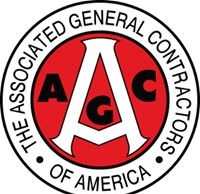Amidst Continued Strong Capital Flows In Europe, the Real Estate Industry Focuses on Contending with Disruptive Forces and Meeting the Needs of Occupiers
Joint Forecast by ULI and PwC Examines Market Prospects for 2016
LONDON – January 14, 2015 – (RealEstateRama) — Rapidly changing demands of occupiers and the disruptive forces of technology, demographics, social change, and rapid urbanisation are permeating the European real estate value chain, according to Emerging Trends in Real Estate® Europe 2016: Beyond the Capital, a forecast published jointly by the Urban Land Institute (ULI) and PwC.
These ground-level disruptions have led to investors focusing on cities and assets rather than countries. This is also visible in investors demonstrating more interest in alternative, operational sectors that have benefited from rapid urbanisation and demographic shifts, such as healthcare, hotels, student accommodation and data centres. Forty-one percent of survey respondents would consider investing in alternative sectors, compared to just 28 percent in last year’s survey. The high street retail and logistics sectors, which have benefited from technological advances and improving economic conditions, are also predicted to fare well in 2016.
Development is also expected to create value in 2016, with 78 percent of respondents citing development as an attractive way to acquire prime assets. More progressive developers and investors are innovating in an attempt to meet the needs of increasingly informed and demanding occupiers. The property developers, investors and operators leading the pack are paying more attention to the role the physical workplace plays in talent management and workplace productivity.
“Investors are getting more creative in trying to access future prime assets at reasonable prices through more focus on alternatives and development,” said ULI Europe CEO Lisette van Doorn. “They take more risk on the short term to fulfil their long term objective for core assets. At the same time, more and more players in the real estate industry are starting to address the needs of occupiers, who are seeking harmony between their workplaces and their lifestyle needs. Some of the industry’s biggest challenges right now are how to become less about brick and mortar and more about service and the implications this may have for the traditional business models of real estate operators.”
“Low interest rates, and the weight of capital bearing down on European real estate, mean that most remain bullish about the industry’s business prospects in 2016” said PwC director Gareth Lewis. “But they acknowledge that the global field for real estate is increasingly competitive, and if the current wall of capital recedes, there will be an even stronger focus on underlying market fundamentals, active asset management and operational skills.”
According to the report, the five leading cities for investment prospects in 2016 are Berlin at the top spot, followed by Hamburg, Dublin, Madrid and Copenhagen. Many interviewees expect the German capital to thrive well beyond 2016, based on its young population and its growing reputation as a technology and cultural centre, as well as the land available for development. Notably, London has slipped from the top ten, suggesting that investors are seeing better growth prospects in regional UK and European cities in the short term. In the long term, however, the UK capital remains the first choice in Europe for many international investors focused on wealth preservation with liquidity and the scale of the market, together with relatively robust economic performance.
The strong ranking of Birmingham, Britain’s second city, reflects the positive view expressed during the interviews on property investment in UK regional cities, including Manchester. Birmingham, which is set to benefit from substantial infrastructure investment, in particular the HS2 high-speed rail line to London scheduled to open in 2026, reflects a trend seen in a number of European regional centres by offering good value for investors.
Top Investment Markets for 2016
The top five European real estate investment markets in 2016 are predicted to be:
- Berlin– Maintaining last year’s number one position, Germany’s capital tops the table for both investment and development prospects in 2016. An influx of the creative industry and the technology sector has led to the strongest office uptake the city has ever seen. A young, international and diverse employee base and a lower cost of living have also driven the city’s progress. Berlin’s status as a cultural centre and a trendy location has boosted housing and retail prospects as well.
- Hamburg– Hamburg, which has taken the second spot from Dublin, has proven a dynamic city that responds to the needs of future occupiers. With more than €5 billion in investments over the year to Q3 2015—over half of which originated from foreign buyers—Hamburg is the sixth most active market in Europe. The city boasts a diverse occupier base, with demand for offices coming from the media, business services, and trade sectors, including many SMEs. Office vacancy is at a historic low and construction is expected to increase in 2016, delivering 127,000 square metres of new office space to ease the current limited supply.
- Dublin– While Dublin is still attracting plenty of capital, the consensus among interviewees is that the Irish capital has already reached its peak for opportunistic returns. Those who have already invested in the city or who choose to invest in the very near term are likely to see the highest total returns. Dublin offices are expected to see rental growth, but the demand for increased office space is unlikely to be satisfied for several years. The lack of assets suited to bargain hunters has made way for an increased appeal to core investors, who will now have to take on more risk when seeking higher returns. Dublin’s retail recovery has just started and the city has seen a large volume of capital seeking to acquire retail assets.
- Madrid– As the Spanish economy has improved, both institutional and opportunistic investors have flocked to Madrid. The city was Europe’s fifth most active real estate market in the four quarters ending Q3 2015, turning over €5 billion. In addition, a 2.5% vacancy rate in class-A buildings could spur rental growth. However, the city’s rising prices and sub-4 percent prime office yields could deter investors in 2016.
- Copenhagen –Once considered a distressed market, Copenhagen is now noteworthy for its investment opportunities. The Danish capital has seen development in the biotech sector, which has created an environment of strong intellectual capital. The city’s office vacancy rate has been contained, in part due to strong office-to-residential conversion activity. While yields are being compressed (those for prime offices fell from 4.5 to 4.25 percent in the last quarter of 2015), many of those surveyed still consider Denmark an attractive market for office, retail and residential. Further opportunities are likely to emerge in the long term with the development of a new light-rail corridor in the city.
NOTES TO EDITORS
Top 10 European Cities for Existing Property Investments
| 2016 Ranking | 2015 Ranking | Change | |
| 1 Berlin | 1 | ?0 | |
| 2 Hamburg | 4 | ?2 | |
| 3 Dublin | 2 | ?1 | |
| 4 Madrid | 3 | ?1 | |
| 5 Copenhagen | 7 | ?2 | |
| 6 Birmingham | 6 | ?0 | |
| 7 Lisbon | 9 | ?2 | |
| 8 Milan | 12 | ?4 | |
| 9 Amsterdam | 8 | ?1 | |
| 10 Munich | 11 | ?1 | |
Emerging Trends in Real Estate® Europe
Emerging Trends in Real Estate® Europe is a joint report published annually since 2003 by the Urban Land Institute (ULI) and PricewaterhouseCoopers (PwC). The report provides an outlook on European real estate investment and development trends, real estate finance and capital markets, as well as trends by property sector and geographical area. It is based on the opinions of more than 500 internationally renowned real estate professionals, including investors, developers, lenders, agents and consultants.
About the Urban Land Institute
The Urban Land Institute (www.uli.org) is a nonprofit education and research institute supported by its members. Its mission is to provide leadership in the responsible use of land and in sustaining and creating thriving communities worldwide. Established in 1936, the Institute has more than 36,000 members representing all aspects of land use and development disciplines.
About PwC
At PwC, our purpose is to build trust in society and solve important problems. We’re a network of firms in 157 countries with more than 208,000 people who are committed to delivering quality in assurance, advisory and tax services. Find out more and tell us what matters to you by visiting us at www.pwc.com.
PwC refers to the PwC network and/or one or more of its member firms, each of which is a separate legal entity. Please see www.pwc.com/structure for further details.
© 2016 PwC. All rights reserved
contact:
Peter Walker at +44 (0)20 7487 9586
Catherine Gregory at +44 20 7487 9579


















